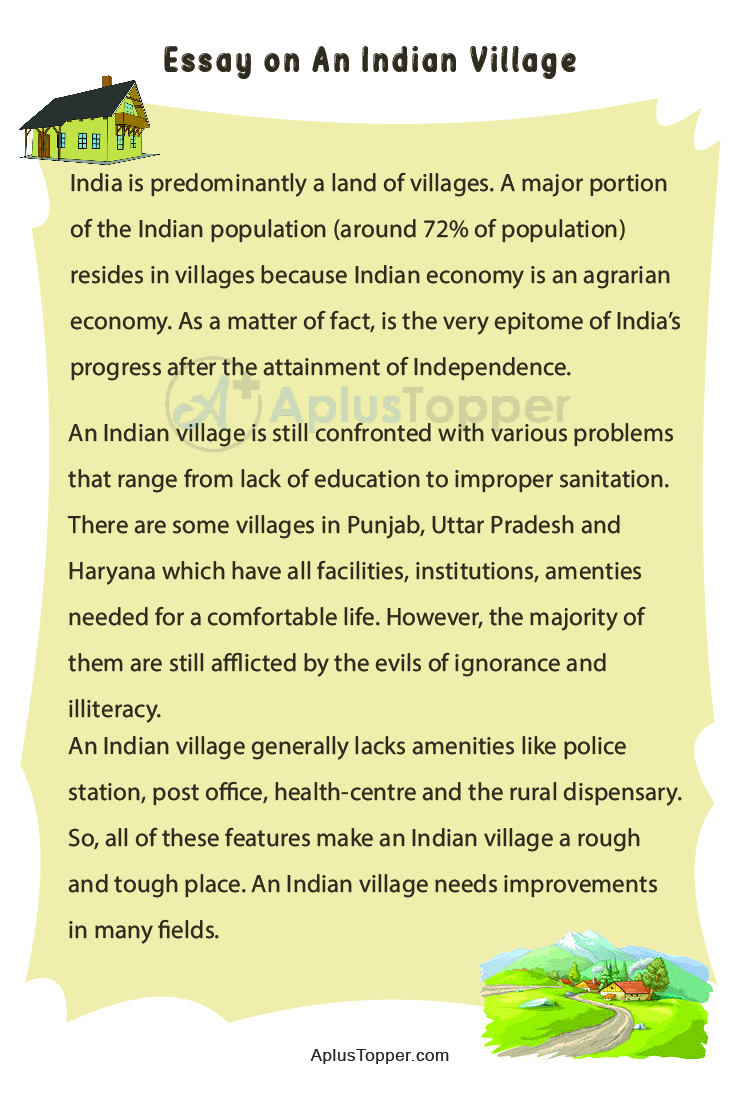Essay on An Indian Village – Given below is a Long and Short Essay on An Indian Village of competitive exams, kids and students belonging to classes 1, 2, 3, 4, 5 6, 7, 8, 9, and 10. An Indian Village essay 100, 150, 200, 250, 500 words in English helps the students with their class assignments, comprehension tasks, and even for competitive examinations.
You can also find more Essay Writing articles on events, persons, sports, technology and many more.
Long Essay on An Indian Village 500 Words for Kids and Students in English
India is predominantly a land of villages. A major portion of the Indian population (around 72% of population) resides in villages because Indian economy is an agrarian economy. Today, there are more than six lakh villages in India.
An Indian village reflects the real picture of India. Mahatma Gandhi said that real India lives in village. As a matter of fact, is the very epitome of India’s progress after the attainment of Independence. The government of free India paid much attention to the lifting of the standards of Indian villagers. An Indian village is still confronted with various problems that range from lack of education to improper sanitation.

No doubt, during the last ten Five Year plans, much has been done to uplift Indian villages. There are some villages in Punjab, Uttar Pradesh and Haryana which have all facilities, institutions, amenties needed for a comfortable life. However, the majority of them are still afflicted by the evils of ignorance and illiteracy. An Indian villager is a rough diamond. He still sticks to the superstitions, customs and conventions of old era that have become obsolete and irrelevant in this modern era of science and technology.
Huts with thatched roofs and mud-packed walls are still a common sight in Indian villages. We still have unmetalled roads, leading to and coming from the village. Its surroundings are green because of the crops and other vegetation. The streets are usually narrow with an open drainage system. During the rainy season, the entire village, because of poor sanitary conditions, gets flooded.
Outside the village, there is a pond where cattle drink water. There are some big and shady trees on the outskirts of the village where village people, farmers and others take rest during their leisure. Under these shady trees, they hold discussions and enjoy the slow pace of life. Some take their lunch under these trees.
There is also a well outside the village, from which villagers draw water for drinking. The scene at the village well in the mornings and evenings is worth watching. The village belles, dressed in their lovely colourful costumes with pitchers on their heads, come to take water from the well. To watch them chatting and talking while coming and going is an alluring sight. The village school consists of two or three rooms where only one teacher teaches all the classes. The students of the school are ill-clad and rough. They sit on the floor.
An Indian village generally lacks amenities like police station, post office, health-centre and the rural dispensary. So, all of these features make an Indian village a rough and tough place. The village is run by the ‘panchayat’- a group of elders, and everyone respects their decision.
Just as every dark cloud has a silver lining, Indian villages have their merits as well. People enjoy the pollution free air. The open fields with lush-green crop present a beautiful sight. The diet is very nourishing, milk, curd and other foods are abundantly available. The villagers have sound health. They live in the bosom of nature. The cool and fresh breeze of the morning, the scenes of sunrise and sunset with the farmers going to their fields along with their cattle and the tinkling of the bells tied round the necks of the cattle producing charming music are the sights, scenes and sounds that are very attractive and enchanting. But an Indian village needs improvements in many fields. After Herculean efforts on the part of the villagers and the administration, it can become an ideal dwelling place.
